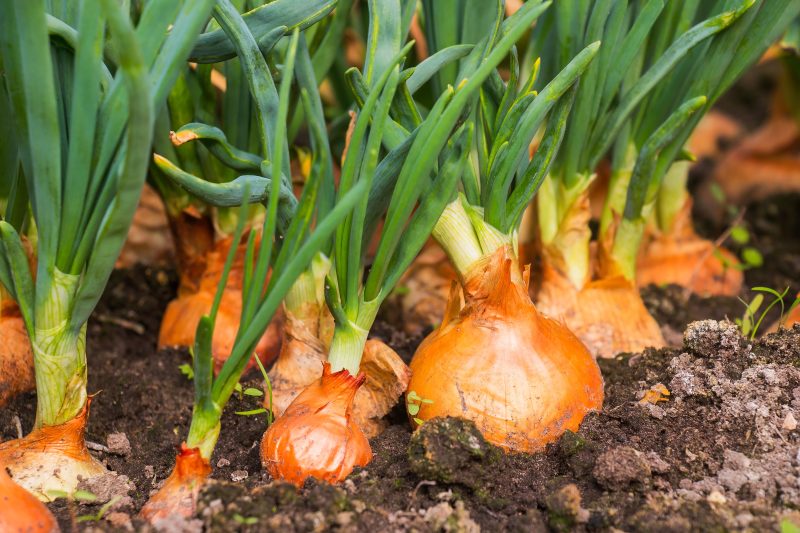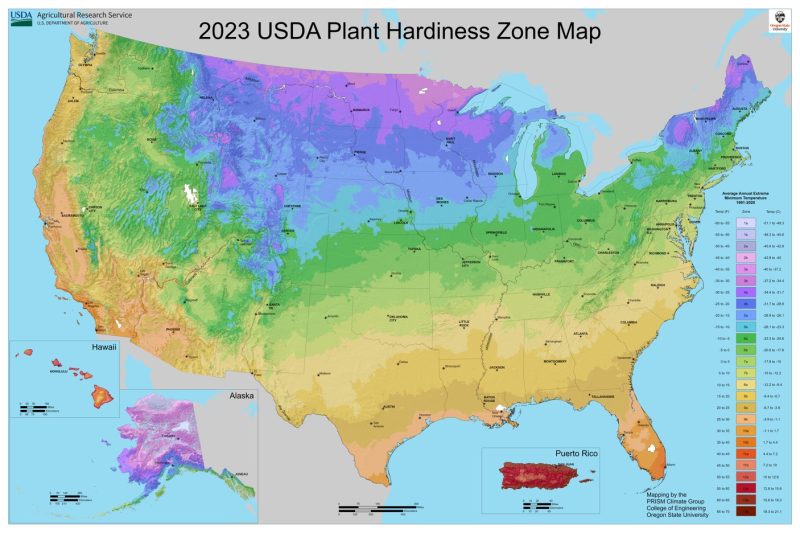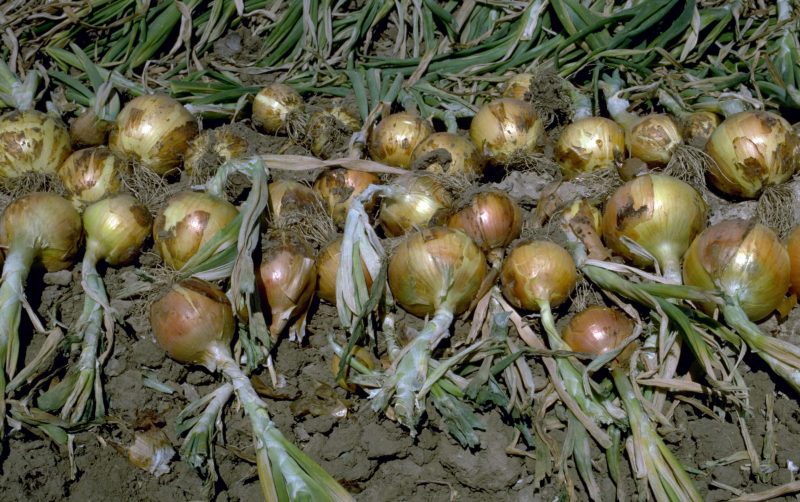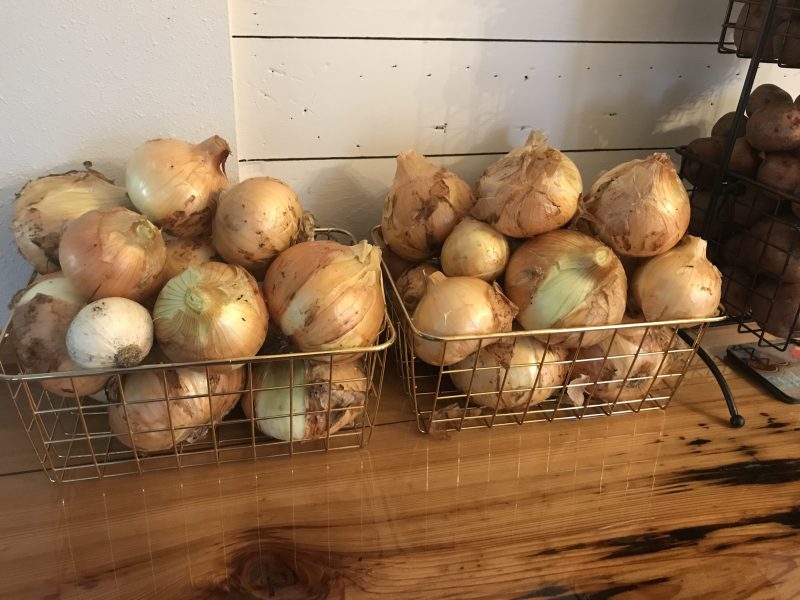
When growing onions, it’s crucial to choose a variety that matches the day length of your region. Photo by Inga, Adobe Stock.
If you know anything about planting bulbing onions (Allium cepa) in the south, you know it is highly recommended to plant short-day varieties during the fall planting season. But do you know why this is the case?
–
The Role of Day Length in Onion Growth
Let’s start with understanding what influences day length. Day length, or the duration of daylight in a 24-hour period, is influenced primarily by the tilt of the Earth’s axis and its orbit around the Sun. The Earth’s axis is tilted at approximately 23.5°, which causes varying amounts of sunlight to reach different parts of the Earth throughout the year.
Latitude also plays a role in determining day length. During summer, higher latitudes (closer to the poles) experience longer days, while lower latitudes (closer to the equator) have more consistent day lengths. In winter, the pattern reverses. For example, in the summer, places like Alaska (high latitude) have very long days, sometimes even 24 hours of daylight, while places closer to the equator maintain relatively constant day lengths year-round.
Onions are highly influenced by day length. Depending on the variety, they require specific amounts of day length to trigger the transfer of carbohydrates from the leaves to the rings of an onion bulb. The potential size of a bulb is dependent upon the number and size of leaves the onion was able to grow leading up to bulb formation. Long-day and short-day onions require specific day lengths to initiate bulb formation, which depends on the latitude of the growing region. Selecting the appropriate onion variety for a specific area is essential for optimal bulb development.
Temperature also plays a critical role in onion growth. Onions thrive at temperatures between 68 to 77°F during the leaf stage and 75 to 85°F during the bulbing stage. Temperatures above 85°F can cause onions to bolt, meaning they prematurely send up flower stalks instead of forming bulbs. Therefore, when determining the proper onion variety for an area, it is important to consider not only the specific latitude of the growing region, but also the correct season for planting.

The USDA Plant Hardiness Zone map can help growers determine the most suitable varieties and planting times based on their region’s climate and temperature extremes. Image by USDA.
–
Long-Day Onions
Long-day onions require about 14 to 16 hours of daylight to initiate bulb formation. They are typically planted in the springtime in northern regions (Plant Hardiness Zones 3 to 6, latitudes of 37 to 47°), where the days are longer during the growing season. This allows the onions to grow sufficient leaves before the lengthening days trigger bulb formation. Varieties such as Walla Walla, White Sweet Spanish, and Yellow Sweet Spanish are popular choices.

Long-day onions thrive in regions with extended daylight hours during the spring and summer growing seasons. Photo by Howard F. Schwartz, Colorado State University, Bugwood.org.
–
In Florida, growing long-day onions is not recommended due to insufficient day length for proper bulb formation during the favorable temperatures for onion production.
–
Day-Neutral Onions
Day-neutral, or intermediate-day onions, require approximately 12 to 14 hours of daylight to form bulbs. They are versatile and can be grown in a wider range of zones and latitudes compared to short-day and long-day onions (Plant Hardiness Zones 5 and 6, latitudes of 32 to 42°), making them a good choice for regions that fall between the ideal conditions for the other two types. Day-neutral varieties include Candy Hybrid, Super Star, and Red Candy Apple.
In Florida, day-neutral onions are best avoided as our warm temperatures can hinder bulb formation, leading to smaller bulbs. This is especially true in south Florida, where bulb formation may be unlikely.
–
Short-Day Onions
Short-day onions need only 10 to 12 hours of daylight to start forming bulbs. They are typically planted in the fall or early winter in southern regions (Plant Hardiness Zone 7 and warmer, latitudes of 25 to 35°), where shorter days allow for growth during cooler months and bulb formation as days lengthen in late winter and early spring.
Short-day onions are known for their higher water and sugar content, making them juicier and sweeter compared to their long-day counterparts. They also have a less pungent taste due to their lower sulfur content. However, their juiciness comes with a trade-off: short-day onions typically have thinner skins, leading to a shorter storage life compared to the more durable long-day onions. Popular short-day varieties include Granex, Texas Super Sweet, and Red Creole.

Texas Super Sweet onions are a short-day variety known for their mild, sweet flavor, well-suited for the south. Photo by Daniel Leonard.
–
Growing Onions in the Florida Panhandle
For those looking to grow onions in the Florida Panhandle, focusing on short-day varieties is key, as we are at low latitudes of about 29.7 (Apalachicola, FL) to 30.9° (Malone, FL).
Onions can be grown from seed, but it is much easier and quicker to grow from onion sets, which are dormant bulbs started from seed the previous year. Sets should be planted two to six inches apart in nutrient-rich soil with full sun. Ideally, they should be planted in October or November and can be harvested in the spring, or about four to five months later, when about a quarter of the green tops fall over.
No matter where you are located, understanding the differences between long-day, day-neutral, and short-day onions is crucial for successful onion cultivation. By selecting the right variety, planting at the appropriate time, and following best practices, you can ensure a bountiful and successful onion harvest.
- Choosing the Right Sales Model for Your Small Farm - July 31, 2025
- Specialty Peppers for Every Heat Level - January 31, 2025
- Understanding Short-Day vs. Long-Day Onions - July 26, 2024
